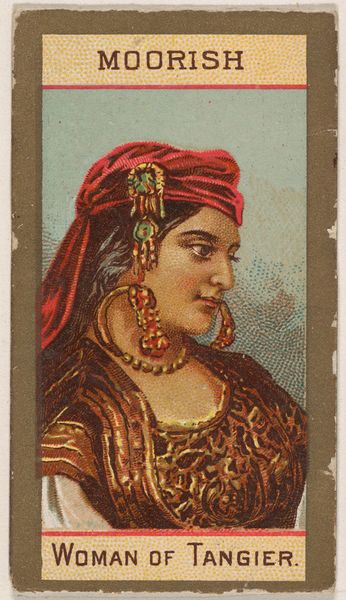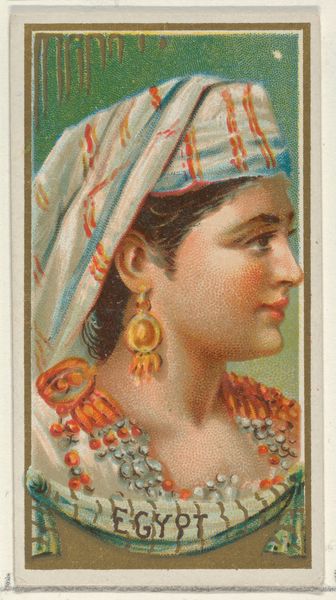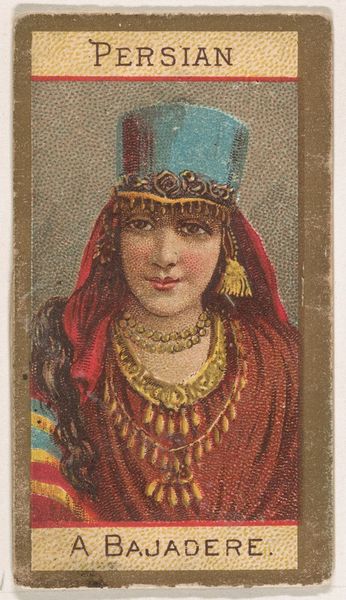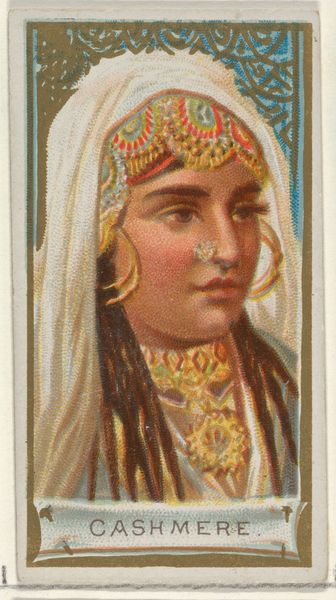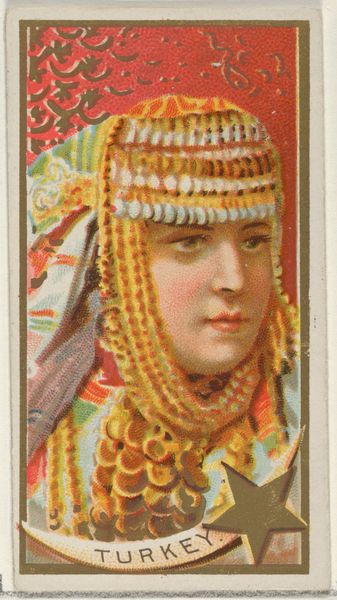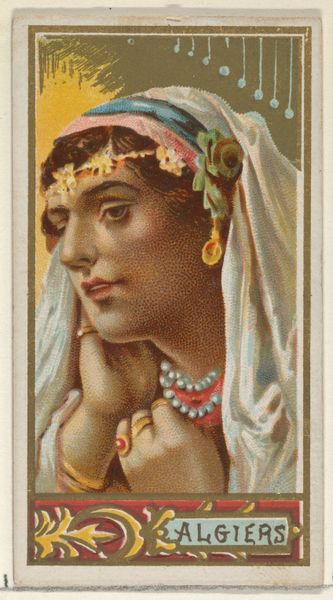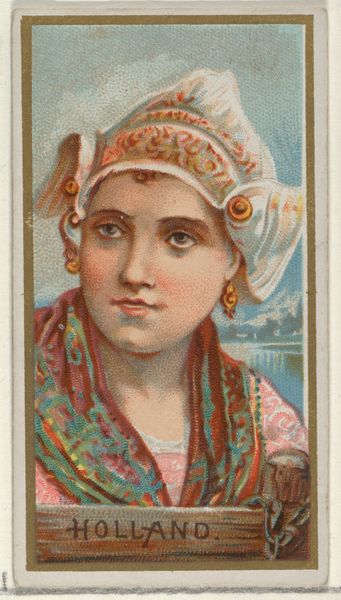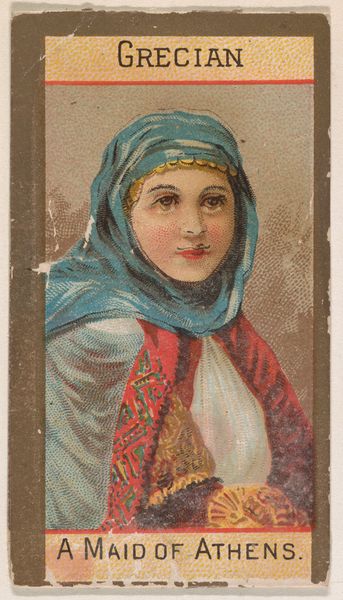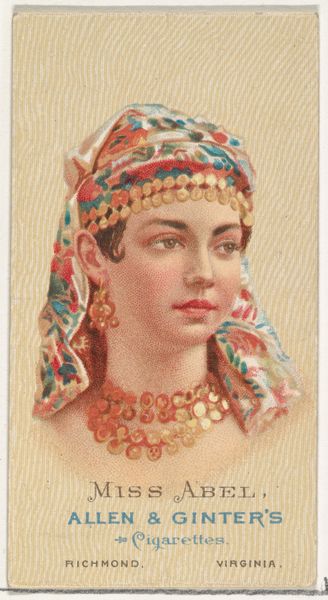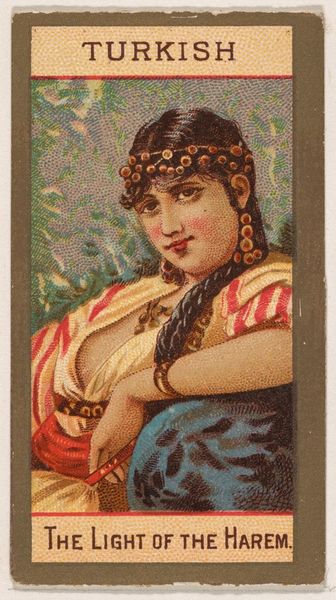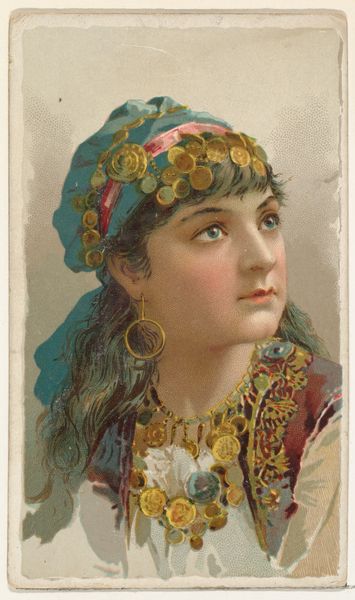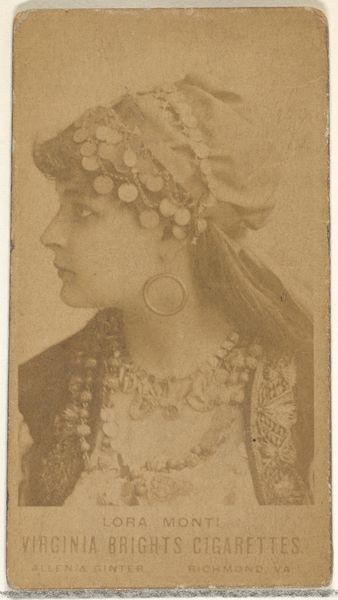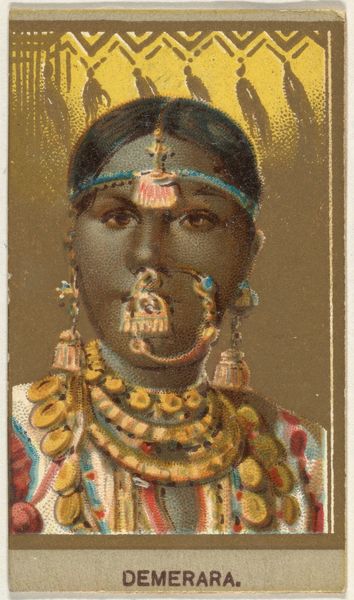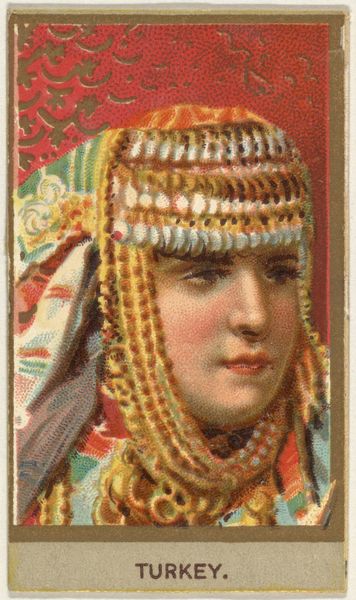
Egyptian, Girl of Cairo, from Types of Nationalities (N240) issued by Kinney Bros. 1890
0:00
0:00
Dimensions: Sheet (Folded): 2 11/16 × 1 7/16 in. (6.8 × 3.7 cm) Sheet (Unfolded): 6 7/8 × 1 7/16 in. (17.4 × 3.7 cm)
Copyright: Public Domain
Curator: Our featured artwork today is a print titled "Egyptian, Girl of Cairo, from Types of Nationalities (N240) issued by Kinney Bros." Dating to 1890, this work resides here at The Metropolitan Museum of Art. Editor: It's remarkably vibrant for a print from that era. The colours are quite striking—the juxtaposition of the turquoise headscarf against the warm reds and golds creates an immediate focal point. It’s small, a tight portrait format. Curator: As part of a series categorizing ‘national types’, it reflects a Western gaze, presenting an image of Egyptian identity through a particular lens. The ornate jewellery and headscarf are significant. These elements signal status but also evoke ideas about the 'Orient' in the Western imagination. It's an orientalist trope from that period. Editor: The piece utilizes a relatively shallow depth of field, which keeps the attention on the foreground elements and pushes everything back and flattening the picture plane in ways reminiscent of Ukiyo-e portraiture. The application of coloured pencil and drawing work here helps enhance an idea of ‘the other.’ Curator: Absolutely, Ukiyo-e's influence can't be ignored. Its focus on representing an idealized view of a society is important. Notice how her features are softened, almost romanticized. She becomes a symbol—an embodiment—of Cairo, designed to be appealing and recognizable to Western viewers. The golden crescent positioned at her forehead could be symbolic for fertility or power. Editor: And this golden crescent is balanced out with repeated geometric forms of her necklace and head covering: It’s really a beautiful balance between hard structural patterns and soft curves, giving the picture as a whole its structure. There is beauty in this careful visual construction. Curator: Indeed. This portrait captures a moment in time, but it also tells a larger story about cultural exchange and the representation of identity, both from within and outside a culture. What echoes do you detect here? Editor: A complex picture of material aesthetics meets its cultural representations, the image stays with me because its composition both arrests and invites interpretation. Curator: For me, the artwork speaks of resilience and adaptability, highlighting the layered meanings imbued within cultural symbols, even when presented through an external point of view.
Comments
No comments
Be the first to comment and join the conversation on the ultimate creative platform.
